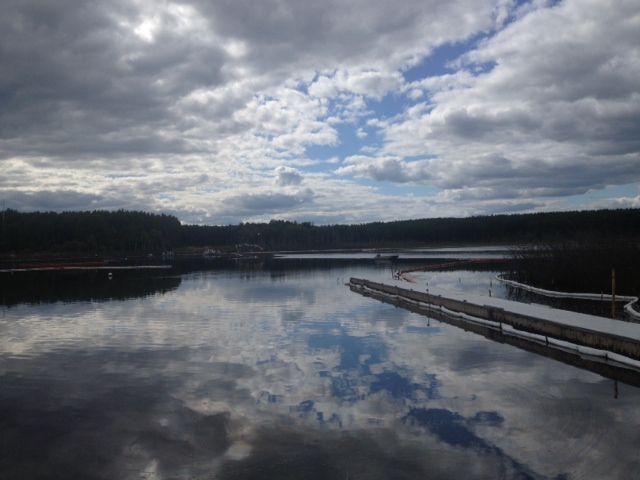The 60,000 litres of crude spilled into northern Alberta muskeg last week is only the latest of Canadian Natural Resources Ltd.’s operational accidents.

CNRL, one of Alberta’s energy industry giants, has had more spills since January than any other operator in the province – by a wide margin.
The company attributed last week’s pipeline spill to “mechanical failure” — the same reason initially given for the quartet of leaks that have been oozing bitumen emulsion for 18 months — more than a million litres, and counting, spilling from CNRL’s Primrose operations in northern Alberta’s Wolf Lake area.
READ MORE: Questions of why more wasn’t done after CNRL’s 2009 spill
It wasn’t until this fall, more than a year after the releases began from a series of different sites in the area, that CNRL admitted they may have been caused by its own high-pressure cyclical steam stimulation, which involves injecting steam underground at extremely high pressure — pressure the caprock, in this case, may have been unable to withstand.
Those spills show no sign of stopping, although the company said it has them under control and is recovering the leaking crude.
And even though a provincial investigation into the never-ending spills is still ongoing, Alberta’s Energy Regulator has allowed CNRL to begin a lower-pressure steaming operation in the same area.
The regulator “is satisfied this approach will successfully mitigate potential risks of further bitumen release at the sites,” read a statement on its website regarding Primrose operations.
That permission appears to contradict another regulatory bulletin that called for a cessation of any steam-assisted bitumen extraction in one particularly shallow area of the oilsands while it reviews the technical safety of the practice. If high-pressure steam caused the rock to fracture and spill bitumen in CNRL’s case, some environmentalists argue, that spells trouble for high-pressure steam operations in general — an extremely fast-growing bitumen extraction method.
Critics point to CNRL’s accident history — the company has reported 25 bitumen and crude oil spills since January, including the ongoing Primrose spills and another, smaller spill last Thursday — as indication of an energy giant paying insufficient attention to safety and a lax regulator allowing these “mechanical failures” to go unchecked.
“We can connect the dots,” said Erin Flanagan, an analyst with environmental advocacy group Pembina Institute.
“This is an operator with a below-average public safety record.”
“If it is a mechanical issue, that’s something that CNRL has claimed has been a problem for them in the past. So I think it’s very troubling. … They have a track record of not engaging stakeholders and they have a track record of these ongoing blowouts.”
CNRL, for its part, said it has everything under control.
“A portion of the product went off lease along a pipeline right-of-way that has also been fully contained.”
The company also said it has contained the spilling bitumen at its Primrose site, and can prevent similar spills in future.
“Canadian Natural has full containment of each surface release and has fully cleaned up all of the flow to surface sites,” Woo said.
“Bitumen emulsion seepage is currently too small to measure.”
Woo added that CNRL has “developed methods to prevent bitumen seepages for all potential failure mechanisms.”
Pembina’s Flanagan was also critical of the way the province has policed CNRL. She pointed specifically to a protracted evaluation of the province’s pipeline safety practices that didn’t actually evaluate compliance or spill response.
READ MORE: Alberta officials ensured ‘independent’ pipeline safety review wouldn’t look at enforcement
Alberta’s Auditor General has said he wants to evaluate the province’s oil industry regulation himself.
“If the AER or the government really wants to prove they are achieving responsible development,” Flanagan said, “they need to conduct case studies on specific incidents to ensure they’re being handled correctly.”
GLOBAL NEWS INVESTIGATION: Crude Awakening




Comments